BCA Float E2-35 Avalanche Airbag Backpack
Stated Volume:
- With E2 system: 31 liters / 1891 cubic inches
- Without E2 system: 35 liters / 2136 cubic inches
Available Sizes: S/M & M/L
Avalanche Airbag System: Alpride E2
Stated Weight:
- With E2 system: 6.1 lbs / 2792 grams
- Without E2 system: 3.6 lbs / 1651 grams
Test Locations: Chugach Mountains, AK
Test Duration: 6+ months
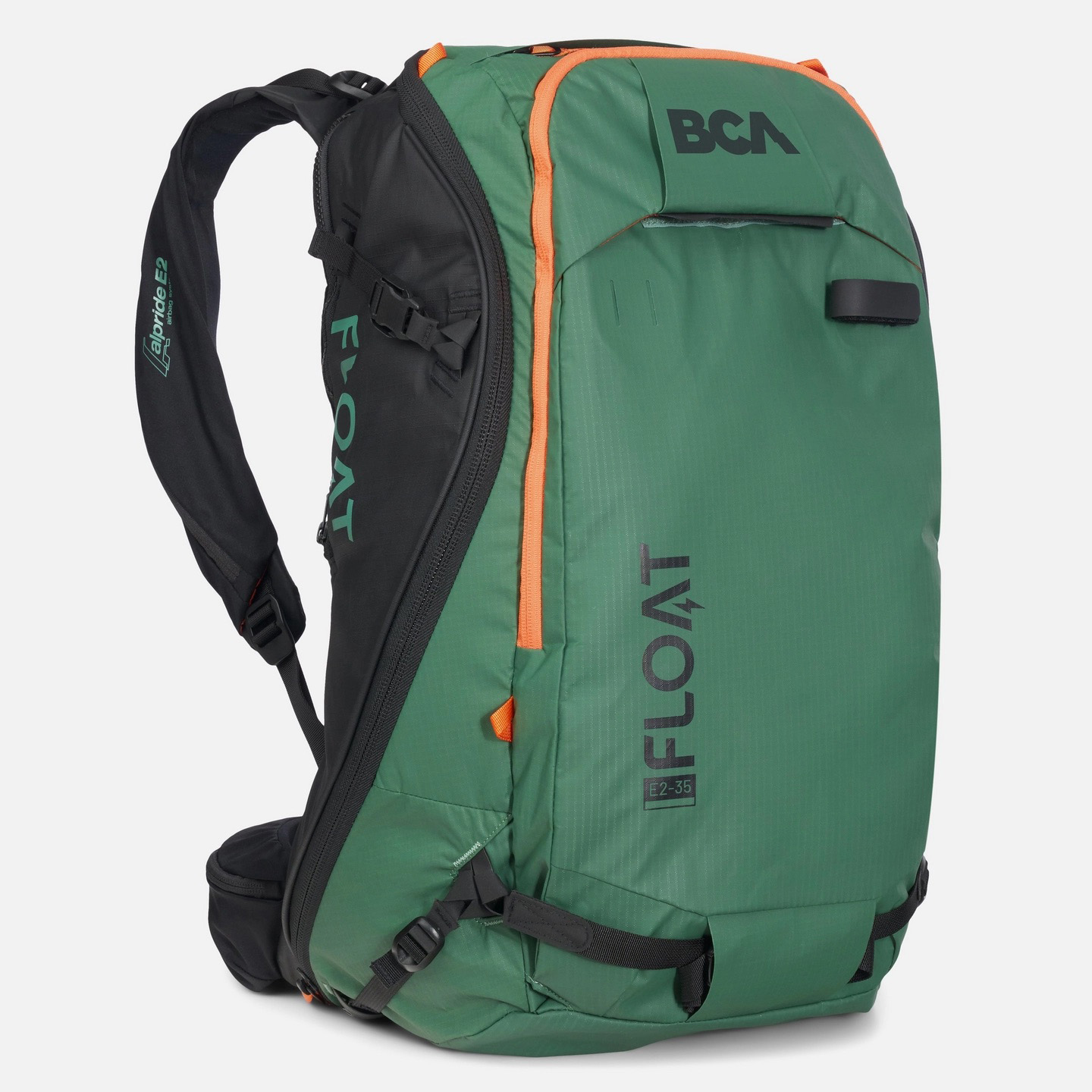
Intro
The first review I ever wrote for Blister was for an airbag pack, the long-since-discontinued Mystery Ranch Blackjack. At that time, avalanche airbags were still relatively new, especially in North America. As an avid backcountry skier in the late 90’s and early 2000’s, I was an early adopter of airbag packs and had tried a few of them by the time I got a Blackjack, but everything I had previously tried felt like the airbag system was the priority and the packsack itself more of an afterthought, built around a bulky airbag. When I got my hands on that old Blackjack, though, I was elated to have a highly functional and well-thought-out ski pack that happened to have an airbag attached to it.
So, why am I talking so much about a pack from 2011? Because the BCA Float E2-35 is the first pack I’ve used since then that has impressed me to a similar degree, because of both its excellent Alpride E2 airbag system and the equally impressive pack designed around it.
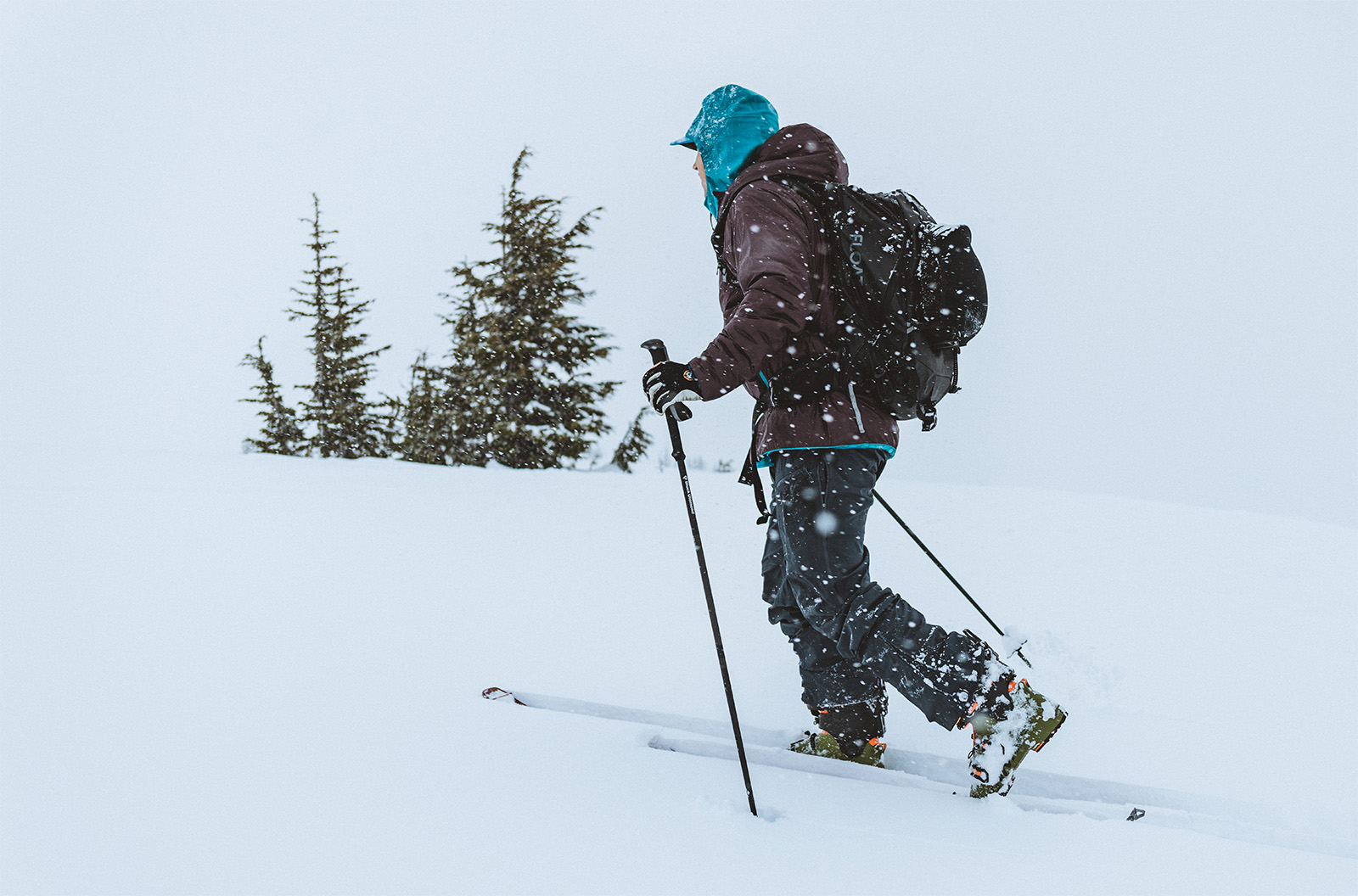
Alpride E2 Airbag System
I’ve been using the original Alpride E1 system in the Scott Patrol E1 30 as my primary touring setup for the past few seasons because I appreciate the simplicity of the supercapacitor-based system and its relatively low weight. You can check out my Full Review of the E1 system and that pack here.
The newest E2 system seems to be an improvement in every way. It’s about 25% lighter (per BCA) and takes up a smaller footprint inside the pack (reportedly 40% smaller). You can still charge the E2 system at home, now with a USB-C cord (a nice improvement from the micro USB on the E1), and you can still recharge it using two AA batteries. All of these features are why I stuck with the E1 for so long, and they come in particularly handy when traveling (there’s no built-in lithium-ion battery), if you want to practice deploying the bag, accidentally discharge it, or make an actual avalanche deployment.
I’ve accidentally left the E2 system turned on for weeks at a time, and it still contained a charge thanks to the AA batteries. BCA says that the AA’s will keep it charged for 6 weeks if left on or 3 months if routinely turned off. It’s also nice to be able to know that, if I was on a multi-day trip or out guiding in the helicopter and had a deployment, all I’d need is a couple of AA’s to recharge my pack. For those who spend a lot of time in the backcountry, this feature itself is a huge selling point of this system.
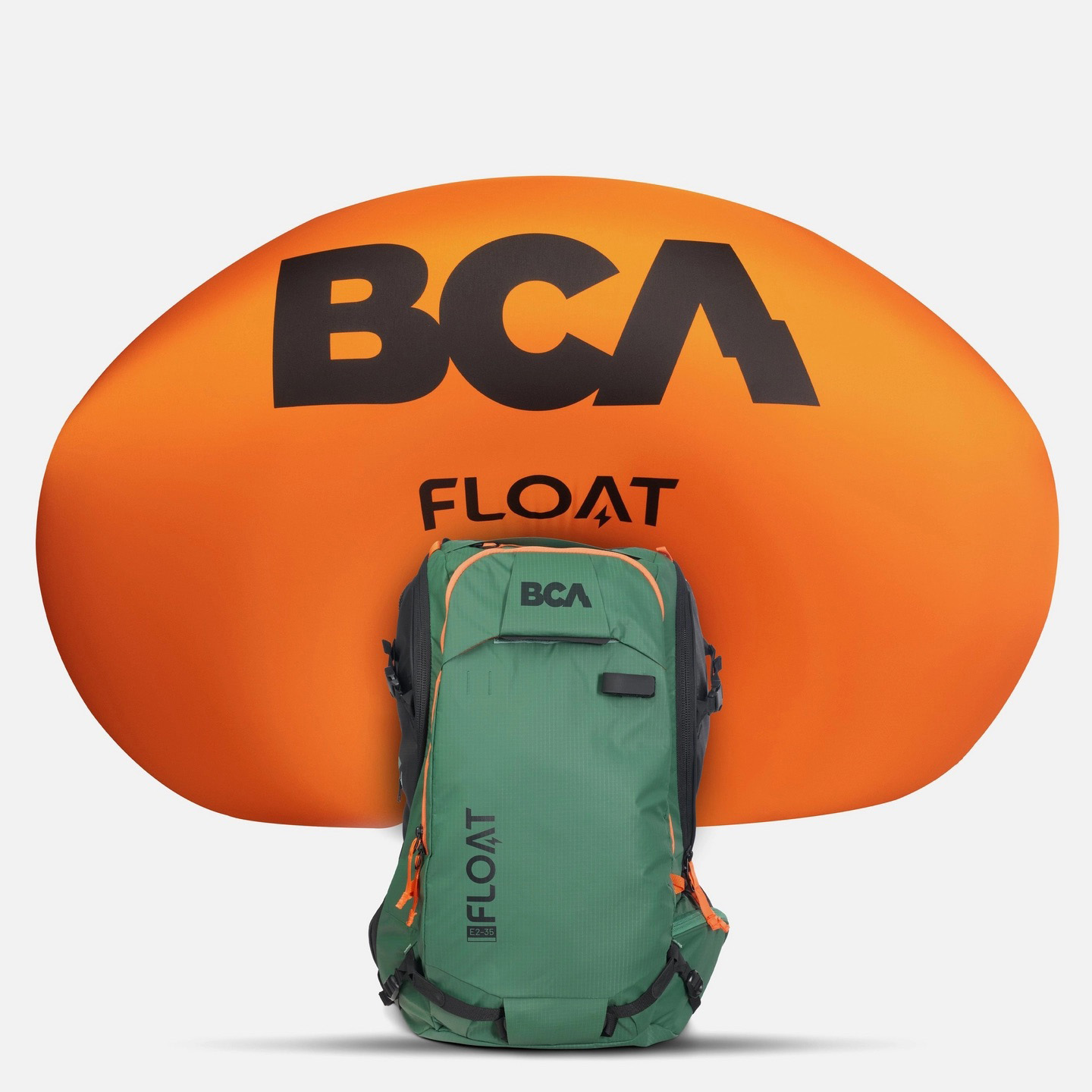
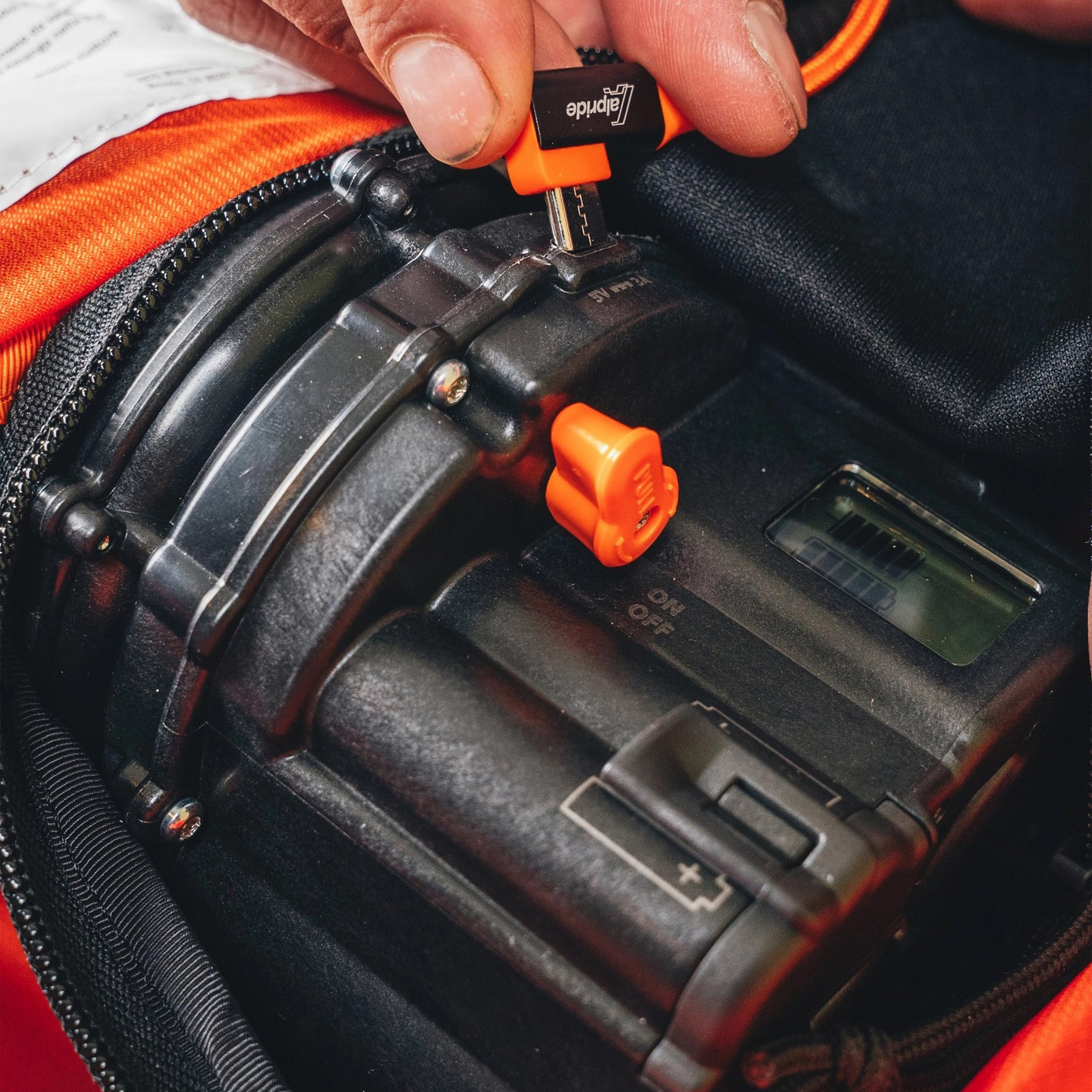
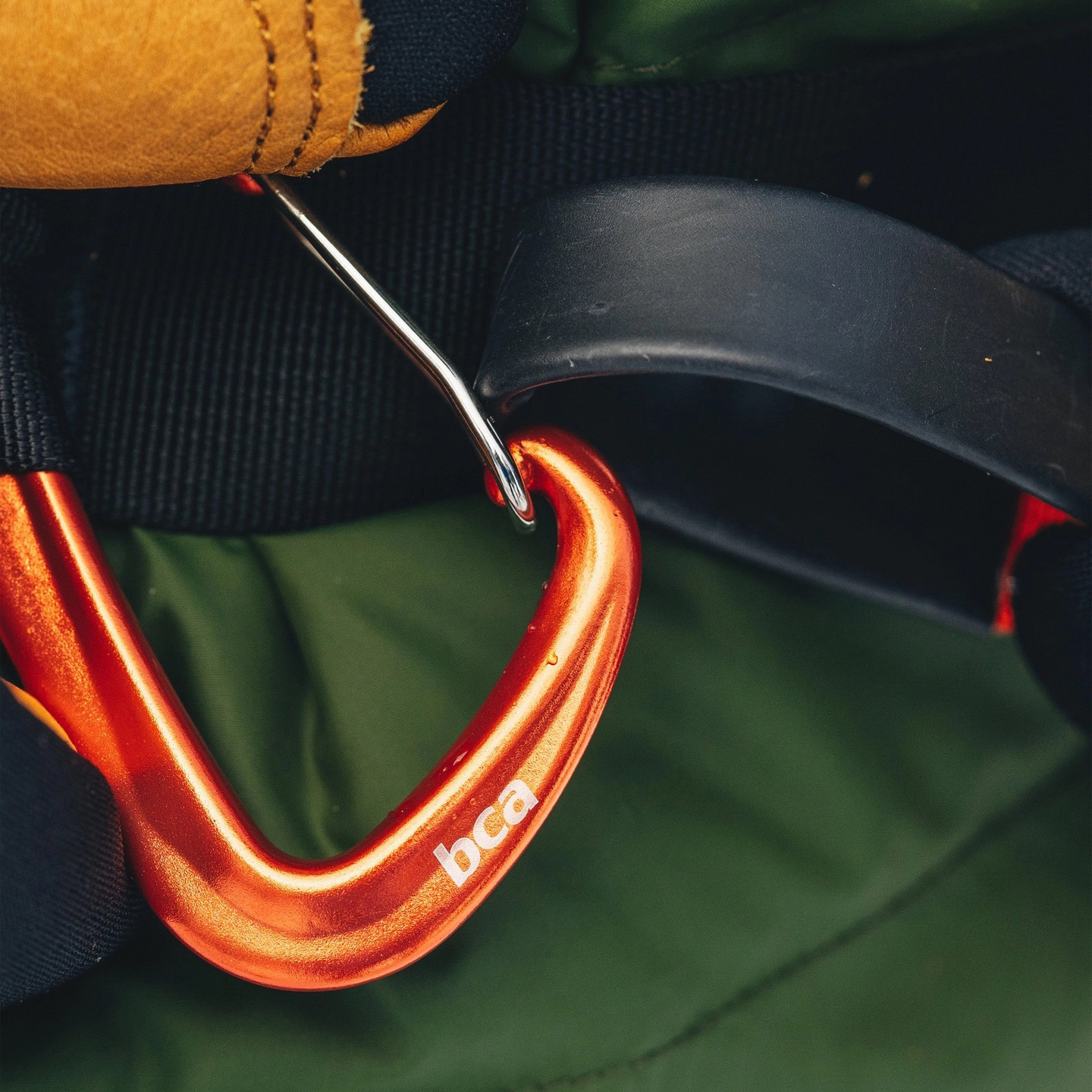
The utilization of supercapacitors vs. an actual battery also apparently allows for a more rapid discharge and potentially faster inflation. I can’t say that I’ve seen a huge difference in deployment times compared to a Black Diamond Jetforce bag, which is the only electric pack I’ve used, but both seem fast enough to me. Alpride does claim that their supercapacitor system offers equal performance across a broader range of temperatures (-22°F to 122°F / -30°C to +50°C) than lithium-ion and lithium-poly batteries.
Another feature of the E2 system that stands out to me on this pack is the break-away zipper that contains the airbag. The airbag pocket zipper popping loose when undesired was a big issue for me with the old Scott E1 pack and has been an issue with a variety of other airbags I’ve used. This is annoying at best and could lead to balloon damage at worst. The Float E2-35 has rarely had this issue, and when it did, it was probably a direct result of my trying to overfill the pack bag with awkward items.
The handle / trigger of the E2 system is pretty standard, but I appreciate that it doesn’t require any extra motions like clicking a T-handle in place, as was the case with the Mammut packs I’ve used for guiding work for the past 13 years. The E2’s handle zips away easily and I can open the trigger pocket on the shoulder harness with one gloved hand. Little stuff like this matters and it’s clear someone gave it some thought.
I also really appreciate the convenience of the Float E2-35’s crotch strap system. It has a laminated loop that can be easily clipped into the carabiner that is affixed to the hip belt almost like you’d attach an ice screw, and this makes for very easy attachment even with gloves on.
Overall, the Alpride E2 is the best airbag system I’ve used so far, and I’ve used the majority of them over the years. The most notable exception is the new LiTRIC system from Arc’teryx and Ortovox, which looks promising on paper and I look forward to testing this year.
BCA Float E2-35 Backpack: Overview
Back to the original premise of this review — the Float E2-35 pack itself is excellent.
Let’s start with size and storage. I’ve owned a lot of “35L” packs with airbag systems, and the E2-35 probably feels like it has the most useable volume of any of them. BCA states that, with the E2 system installed, it offers 31 liters of storage volume.
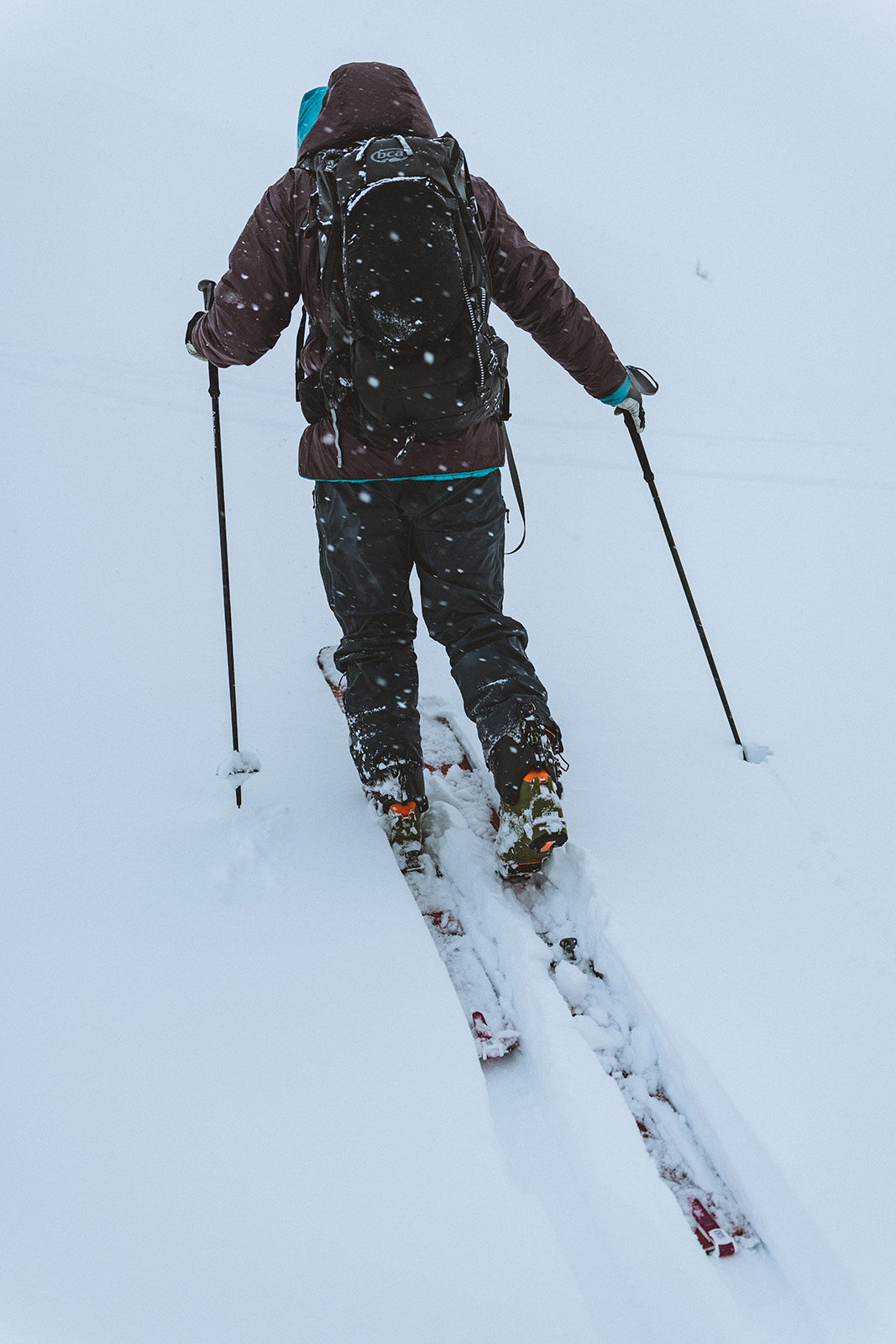
For reference, yesterday I went for a longish tour and carried everything below in or on the Float E2-35:
- 3L water bladder (mostly full)
- Bag of snacks
- Goggles
- Sunglasses
- Patagonia DAS Light Hoody (size XL)
- Patagonia Upstride Jacket (size XL)
- Small take-down .22 caliber rifle (from Ruta Locus for ptarmigan hunting)
- Knife and ammo
- Extra set of skins (for reviewing)
- My helmet strapped to the outside
I could have still jammed other stuff in there if needed. I think the claimed “35L” volume is an honest assessment in this case, and most of that space is highly usable and accessible.
The pack’s main zipper allows it to completely open clamshell-style, allowing easy access to anything inside, as well as the airbag system. As I’ll discuss below, there is an option to expand the main compartment into the “Stash” compartment by opening the small divider between them.
There’s also a compact compartment in the back panel (with a key hook) that is perfect for small essentials like batteries, a minimalist repair kit, multi-tool, etc. That “Back Stash” pocket is also designed to serve as a place to put a radio (like BCA’s Link) or hydration reservoir and route the cable to the shoulder harness.
Up top, there’s a soft-lined goggle pocket in which I can fit both a pair of goggles and a pair of sunglasses. I try not keep much else in there to keep the lenses in good shape.
The “Side Stash” pocket is one of the defining features of the Float E2-35 and one that I immediately grew to appreciate. It’s a small zippered compartment on the right side of the pack that can be reached fairly easily without removing the pack. The panel on the “door” of it is stiff enough that the zipper can be easily used with one hand. The Stash pocket will easily swallow a set of 130 mm x 190 cm skins, even when blindly reaching back while wearing the pack. It will also hold a 2-3L water bladder and some snacks.
On warm days, or on the last run of the day, I tend to toss skins in there. More often, though, I use it for water since I usually ski down with my skins in a jacket pocket. I’m a big fan of quick transitions without removing my skis, and when I don’t need to change layers, I can do that without taking off the Float E2-35 (whether I’m putting my skins in my jacket or in the Stash pocket). Overall, the Stash pocket is an excellent feature and one that I’ll miss if I swap to a different pack.
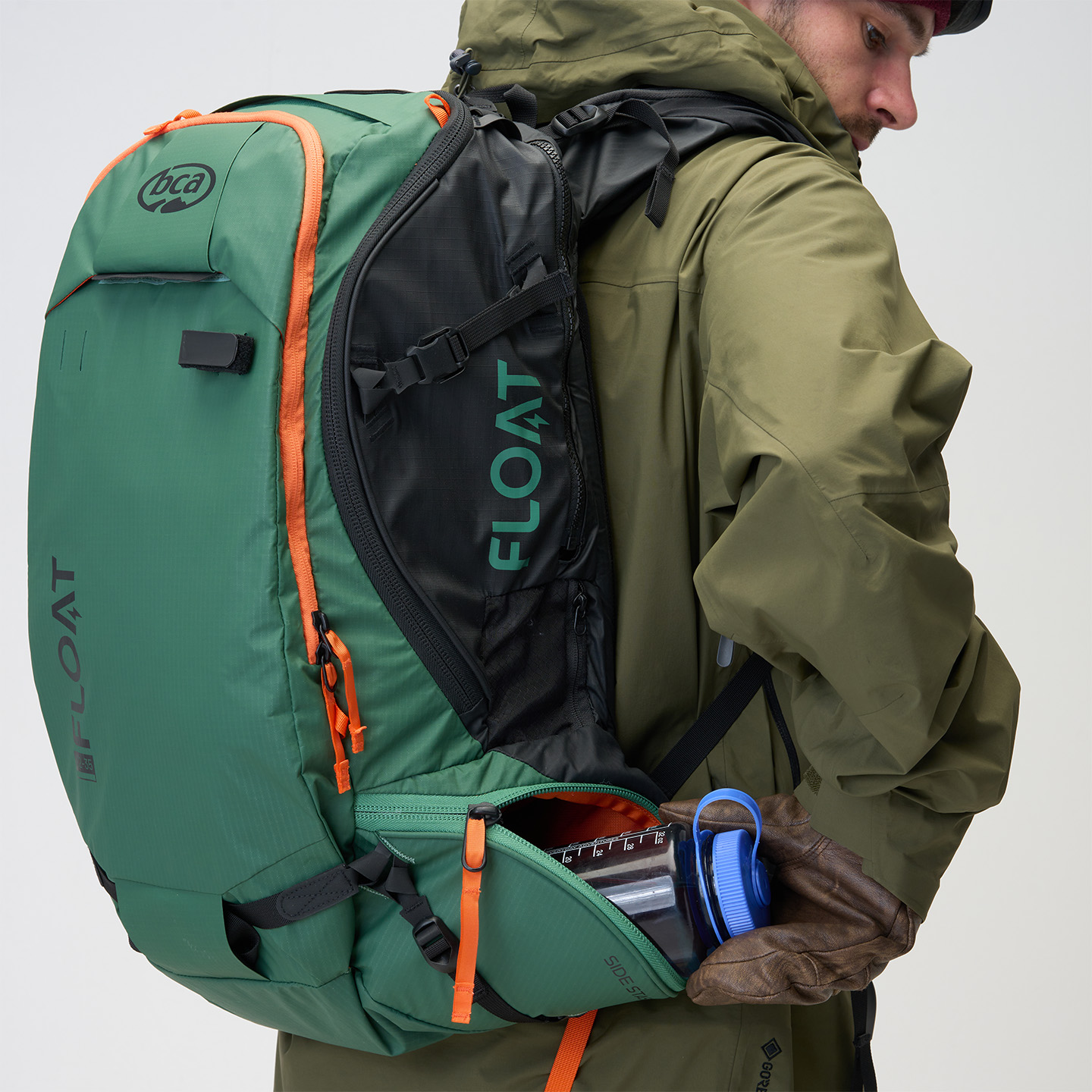
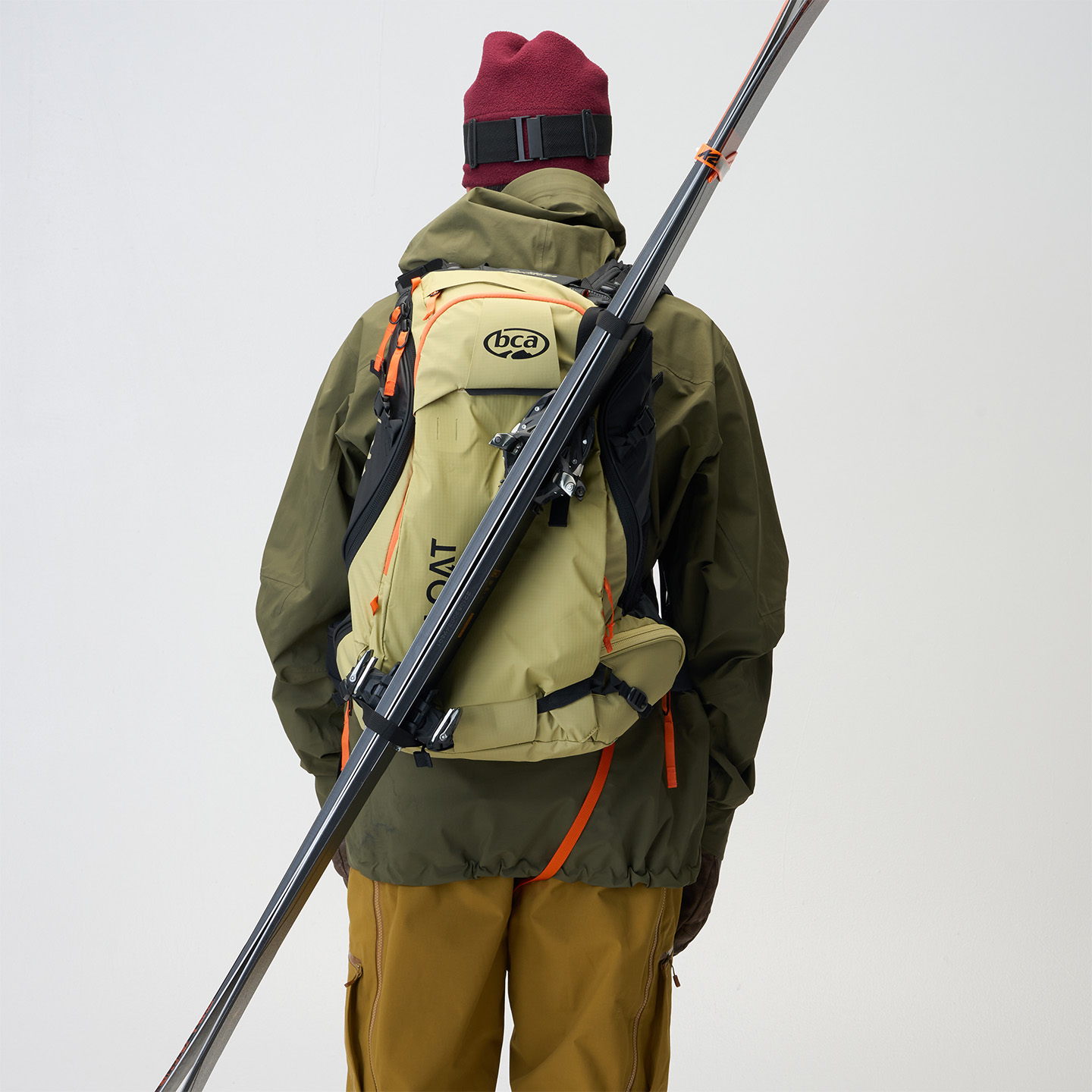
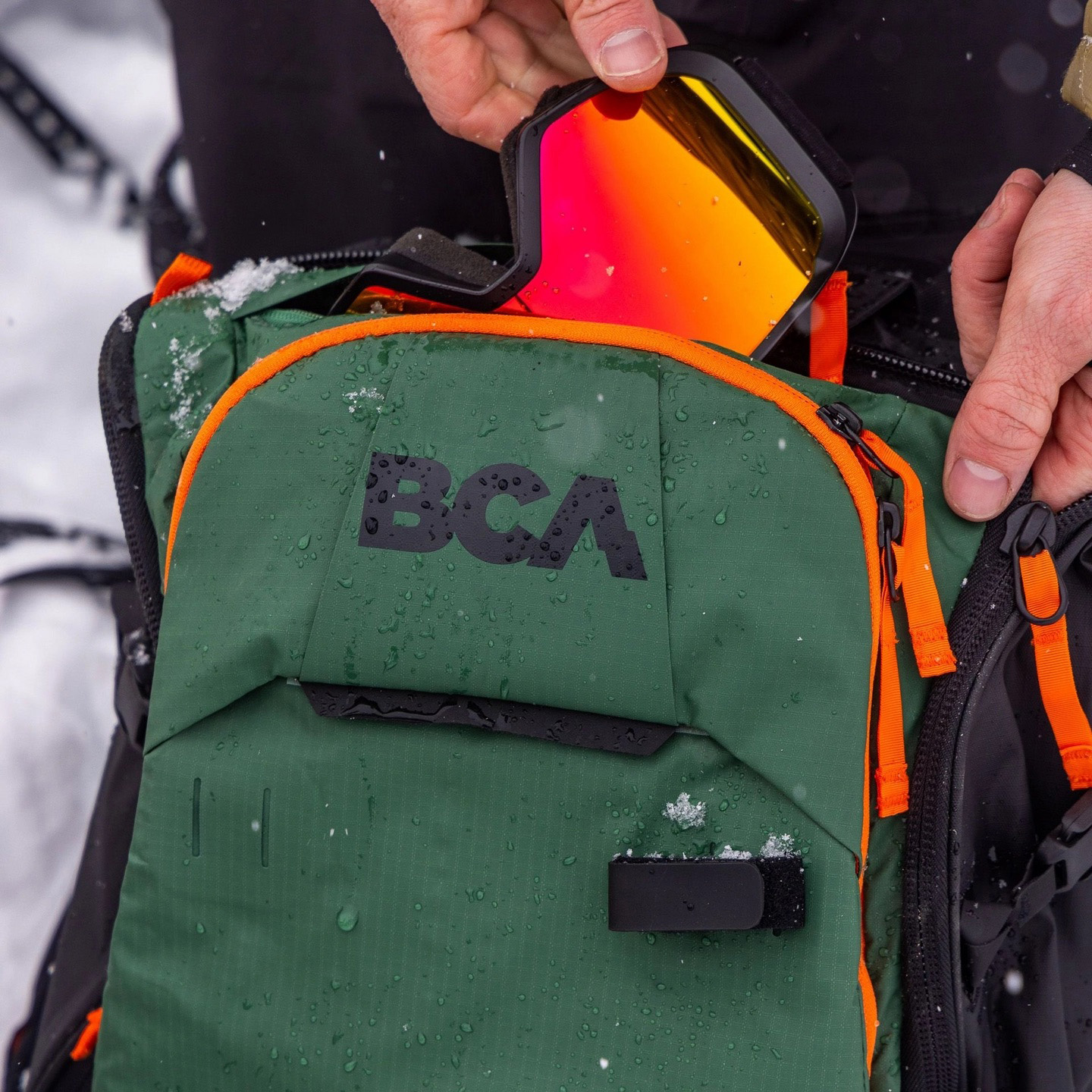
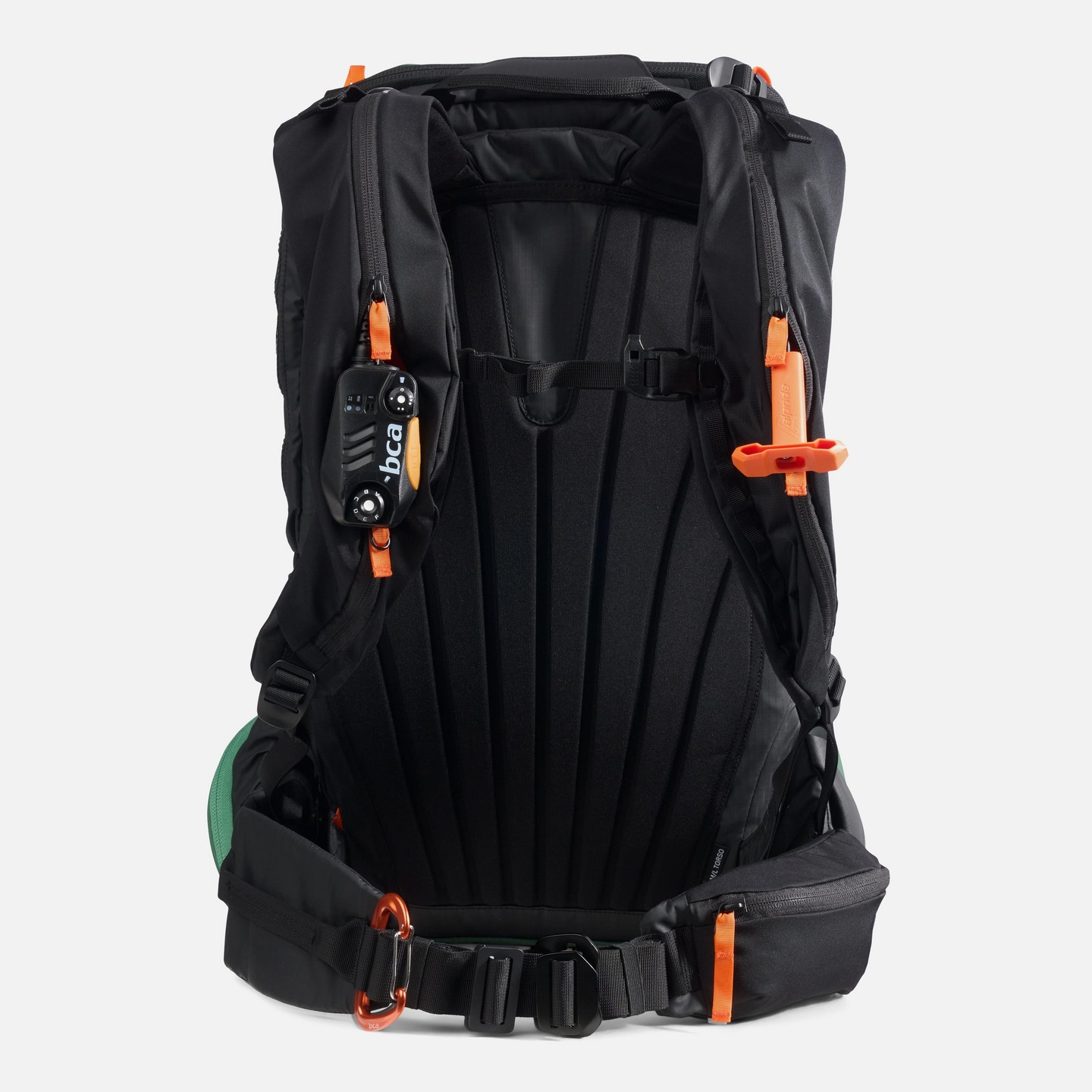
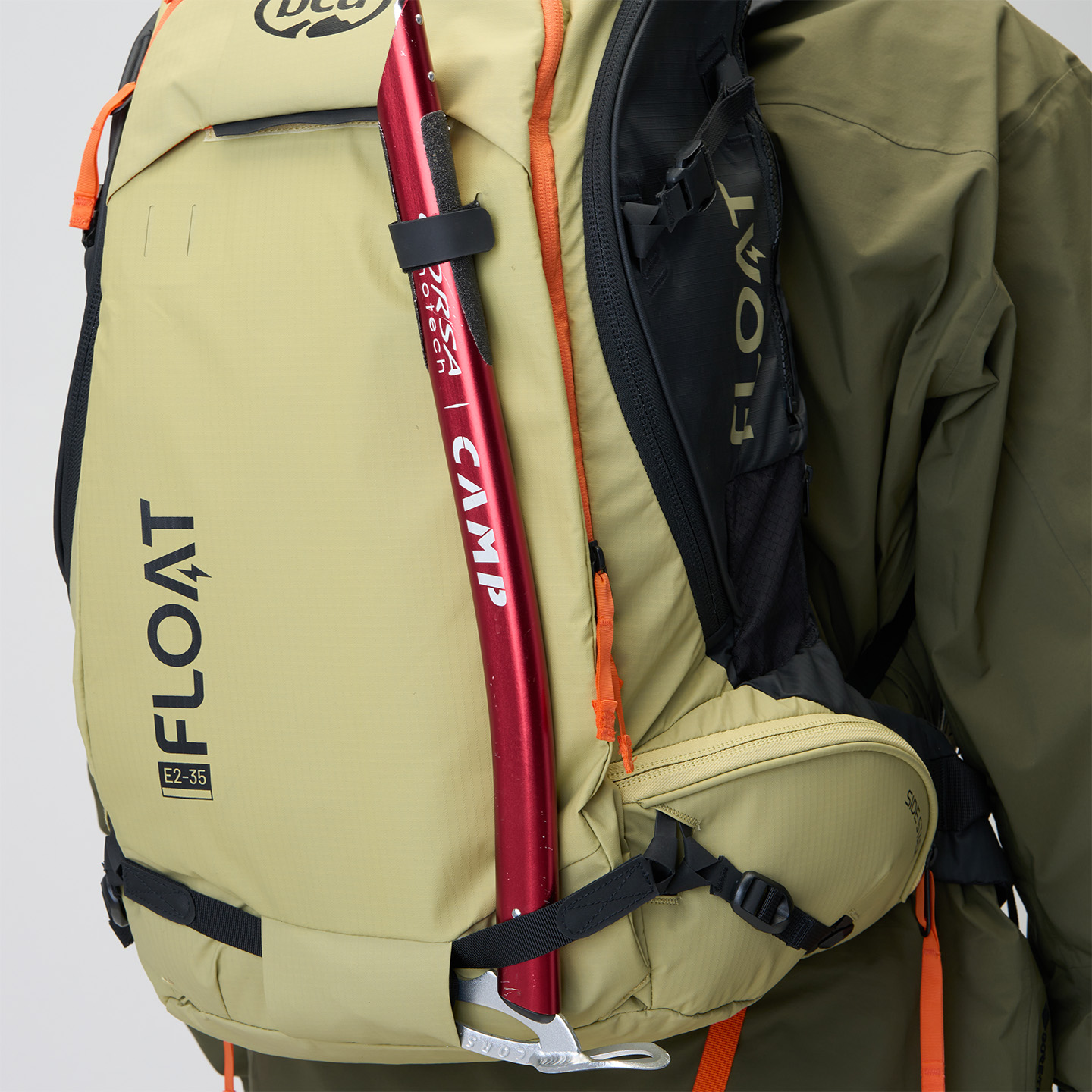
The Float E2-35’s compartment designed for avalanche tools is the only aspect that I feel could be improved upon. In my opinion, any pack of this size or larger could potentially be used by a guide or snow professional, and many of us in that line of work appreciate the option of bringing a larger shovel than might be common among non-guides.
To me, the bare minimum shovel size for heli-ski guiding is a Black Diamond Evac 7 with a 12”x10” blade. Few snow packs, even from companies that also make large-shovel blades, can handle a shovel of that size; the Float E2-35 also struggles in this regard. I really wish companies would put a little more priority on the size of a tool pocket, but it’s probably a minor point for most users. When I’m not guiding, I mostly tour with the more compact Black Diamond Transfer LT, which fits easily in the Float E2-35’s avy gear pocket.
Ski Carry
The Float E2-35 carries skis well A-frame style, but I’ve mostly used it in the diagonal-carry configuration. For this approach, I appreciate that the upper connection point is closer to the body (near the shoulder strap attachment), but this does place some pressure on the airbag zipper. I haven’t yet had skis cause the airbag zipper to pop open, but I could see that happening. I do like that the helmet attachment can rotate to the top of the pack for diagonal carry. It’s worth noting that if the pack is very full and you’re using wide skis (wider than 110 mm underfoot), the upper attachment strap feels a little short. It’s easy to swap out for a Voile ski strap. Lastly, while I haven’t tested this, it’s worth pointing out that the Float E2-35 also offers vertical snowboard carry; you can also attach an ice axe (or two, if you add another strap) on the face of the pack.
Fit, Comfort, and Carry
For reference, I’m six feet tall (183 cm) with a torso around 20” long (51 cm) and wear size 34 pants. For me, the size M/L Float E2-35 works perfectly.
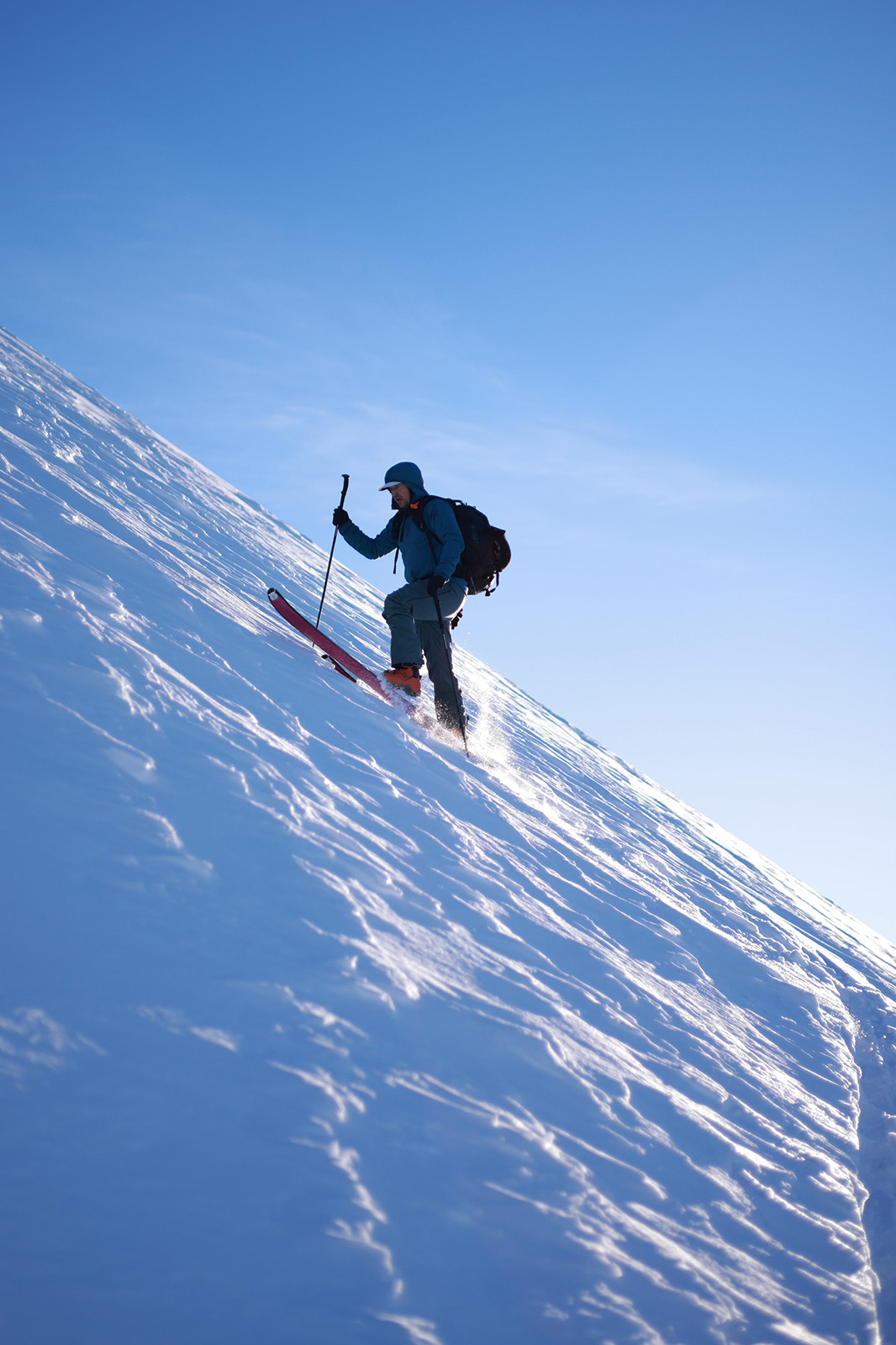
One of my favorite things about this pack, compared to other airbag packs, is how well the back panel conforms to my back, regardless of what I’ve stashed inside the pack. Most of the other packs I use, especially larger ones or those containing airbag systems, feel stiff and do not conform nearly as well. With the Float E2-35, the load / weight does fall away from my back a little more than more vertically elongated packs, but the Float E2-35 still carries quite well even with heavier loads like the contents described above. When skiing down, it feels secure and does not move around on me in unwanted ways.
The Float E2-35’s waist belt is adequate and has a nice pocket that can hold a couple of packets of energy chews. The shoulder straps are wide and adequately padded. I do get some funny sensations of the the right strap slightly digging into my shoulder when I have a BC Link radio in there, but I can usually find an orientation that is tolerable.
Durability
At this point, I have used the Float E2-35 as my primary ski-touring pack for more than a full season and have so far had zero issues with durability. The zippers are large and show no signs of wear or failure. Throughout the rest of the year, I spend a lot of time with packs made from various high-end, lightweight fabrics (e.g., Dyneema and X-Pac); I prefer those fabrics for low weight and water resistance, but aside from some of the Challenge-brand materials I’ve tried, their abrasion resistance isn’t as good as the Cordura-like nylon on the Float E2-35, and those other materials would significantly increase the overall cost. Still, I would like to see more packs featuring these higher-end materials.
Who’s It For?
Those who live in areas where avalanche airbag packs are truly likely to be beneficial (a whole other conversation for another article) should definitely consider the Float E2-35 because it combines an excellent airbag system with an equally impressive ski pack. It’s not the absolute lightest pack out there, but it offers just about all the features I want in a generalist touring avalanche airbag, and more than that, nearly all of those features are well-designed and useful.
Bottom Line
Overall, the BCA Float E2-35 is the best avalanche airbag pack I’ve ever used, and I’ve spent time with most of the ones on the market over the past 10+ years. It carries weight well, the features are well thought out, the Alpride E2 airbag system is one of (if not the) best on the market, and the Side Stash pocket, in particular, is an excellent addition that works as intended.

You gotta wonder if the aluminum safety waist belt buckle is really necessary with the sewn on carabiner for the crotch strap. Arcteryx and Ortovox have gotten rid of the annoying safety buckle since their attachment points for the crotch strap is integrated into the main part of the pack in a strong enough fashion. I guess BCA isn’t confident enough in that?
This pack is obviously more featured than the Ortovox and Arcteryx, but the weight penalty is significant. Wish they could cut down on that some.
I do wish more airbag packs would take a cue from Raide packs:
-Make the pack wider and taller, but shallower. This way the center of gravity of the pack is closer to you. Every airbag pack I have seen is like a brick sticking way out behind the user.
-use high tech fabrics and smart design to get a tough, full featured pack for 1150 grams. Add 1150 grams for the E2 system, plus some extra for the airbag attachments and you are still <2.5 kg for a full featured 40 l pack.
The biggest problem with this pack (based on my ownership and that of 2 friends) is the shoulder straps slip. When you are carrying heavy loads, this is a nightmare. Really should have been ironed out before release
I had the exact same issue, which was basically the only issue I had with this pack. Which is basically the first and only, and I’ve had a few, airbag pack I’ve really liked. The solution to this was adding a triglide (basically had to undo some stitching to retread the should straps). This has kept it more or less perfectly in place ever since, if not just a little bit too much in place, as on the fly adjustability is lost a little bit.
I think the main issue is the metal ladderlock, which is basically not giving enough friction towards the straps. I was however told by the Norwegian (local) BCA rep that, Alpride (and not BCA) mandated the use of metal, as it is part of the alpride ceritifiation.
i should also add, even though not in reply to Jack. That this overall functionality of this pack is the first time I’m actually grabbing this ahead of my trusty old Gregory Targhee 42 for more or less all touring days (unless I really need that extra volume). We will see how the Raide LF40L will affect that equation when it shows up to act as my non-airbag pack soon. But I will say that taking the extra weight of the airbag, even on days when it feels like a waste, for 2 straight seasons of touring, guiding, teaching avalanche courses etc. says something about how well of an overall designed backpack the Float E2-35 really is.
This is a great and helpful review but the BCA’s own manual is terribly inadequate. This is a very good product but people depend on it for their survival and at a price of over $1000, there is a responsibility to produce absolutely clear, thorough, and helpful manuals and or videos. The BCA site does neither. It has videos with music but it’s hard as heck to know just what they’re actually supposed to be showing. The printed manuals are absolutely terrible. Vague, unclear, imprecise, virtually useless. They need to not only field test the gear itself but field test the instruction manual and video with real users to see if they can understand without error how to use the equipment. They are clearly not doing so. Thankfully Blister (which is great) and real world users like Paul are providing good information but the manufacturer has the primary duty and they are failing. I’m very sorry to say this because they’re a good company with good products but it’s time to stop putting up with shoddy manuals when your life may be at stake.